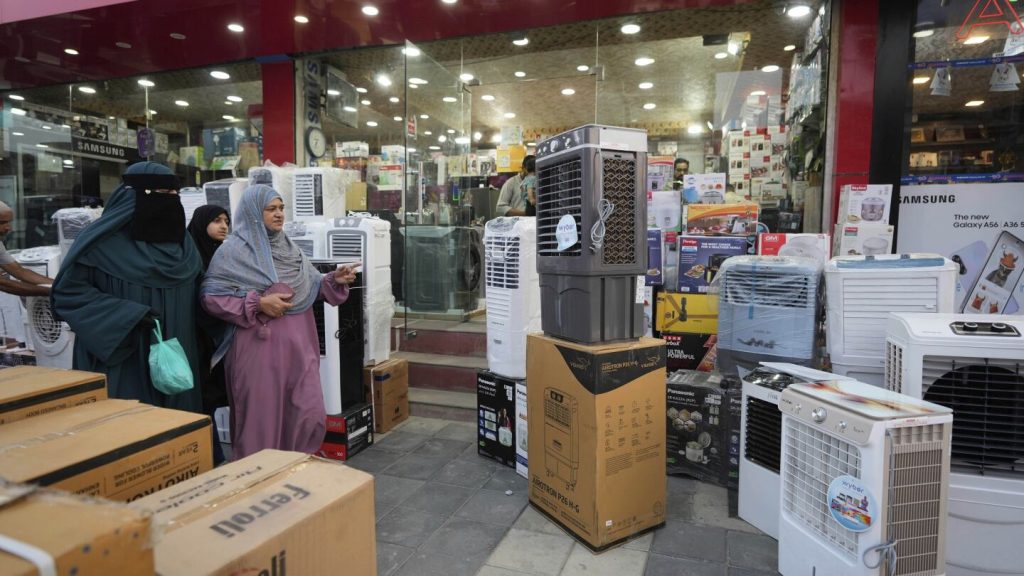BENGALURU, India (AP) — The Indian government aims to restrict the temperature settings on new air conditioners to conserve electricity in a rapidly expanding market.
In June, the power minister suggested implementing a rule mandating that air conditioners sold in the country have thermostats that cannot be set lower than 20 degrees Celsius (68 degrees Fahrenheit).
Officials are optimistic that this minor adjustment will lead to significant energy savings in a nation with over 1.4 billion residents. Annually, between 10 and 15 million air conditioners are sold as rising incomes and urbanization contribute to increasing temperatures.
Currently, the minimum setting for air conditioners is 17 degrees Celsius (62 degrees Fahrenheit). Officials indicate that for every degree the temperature is increased, approximately 6% energy savings can be achieved.
Mixed Reactions to the Proposal
Energy experts view the initiative as a beneficial move, although they believe that enforcing higher energy efficiency standards would be more impactful. Power Minister Manohar Lal Khattar mentioned that the proposed regulation would be implemented soon, without specifying a timeline.
The feedback from residents in India’s hot cities has been varied. Vikram Kannan, a 37-year-old teacher from the humid southern city of Chennai, opined, “While I support energy conservation, I hope the government ensures that it doesn’t inconvenience people too much.” He noted that in extreme weather, setting a low temperature can be essential for comfort.
Energy Consumption Challenges
Air conditioners are becoming major energy consumers in India, accounting for as much as 25% of electricity demand during peak times in 2024, according to University of California, Berkeley estimates. The rise in new AC units between 2019 and 2024 has notably raised India’s peak energy demand, equivalent to powering New Delhi for a year.
As temperatures can peak at 51 degrees Celsius (124 degrees Fahrenheit) during summer months, the urgency for change is evident. Without action, India is projected to experience power shortages by next year, with its energy demands significantly contributing to its status as one of the largest greenhouse gas emitters.
Encouraging Energy-Saving Practices
The air conditioner regulations are part of a larger initiative over the last decade to encourage energy savings, including a requirement for government buildings to maintain temperatures no lower than 24 degrees Celsius (75 degrees Fahrenheit). Additionally, the government launched the Mission Life program in 2022, promoting public awareness around reducing emissions and energy use, although public reception has been mixed.
Some individuals support the new proposal. For instance, Sunil Kumar, a 47-year-old from East Delhi, remarked that the rule might reduce fire risks and lower electricity bills, stating, “People lived well before air conditioners. We can adapt.” However, Surjeet Singh, a business owner from New Delhi, believes that lowering AC settings is unnecessary, urging city investments in green spaces to combat urban heat.
Efficiency in Air Conditioning
Experts like Abhyankar highlight that while changing temperature settings is beneficial, mandating higher efficiency standards for air conditioners would create more significant improvements. Pramod Singh, an advocate for energy savings, described the proposed settings rule as a “step in the right direction,” but also pointed out the challenge of replacing India’s 80 million outdated, inefficient units.
Many air conditioners sold in India would not meet the standards of other countries due to their inefficiency, as Abhyankar noted that about 80% of these units would be banned in China. Experts suggest that simple modifications, such as ensuring proper ventilation in new constructions and integrating air conditioners with alternative cooling strategies, can also help reduce overall energy consumption.



